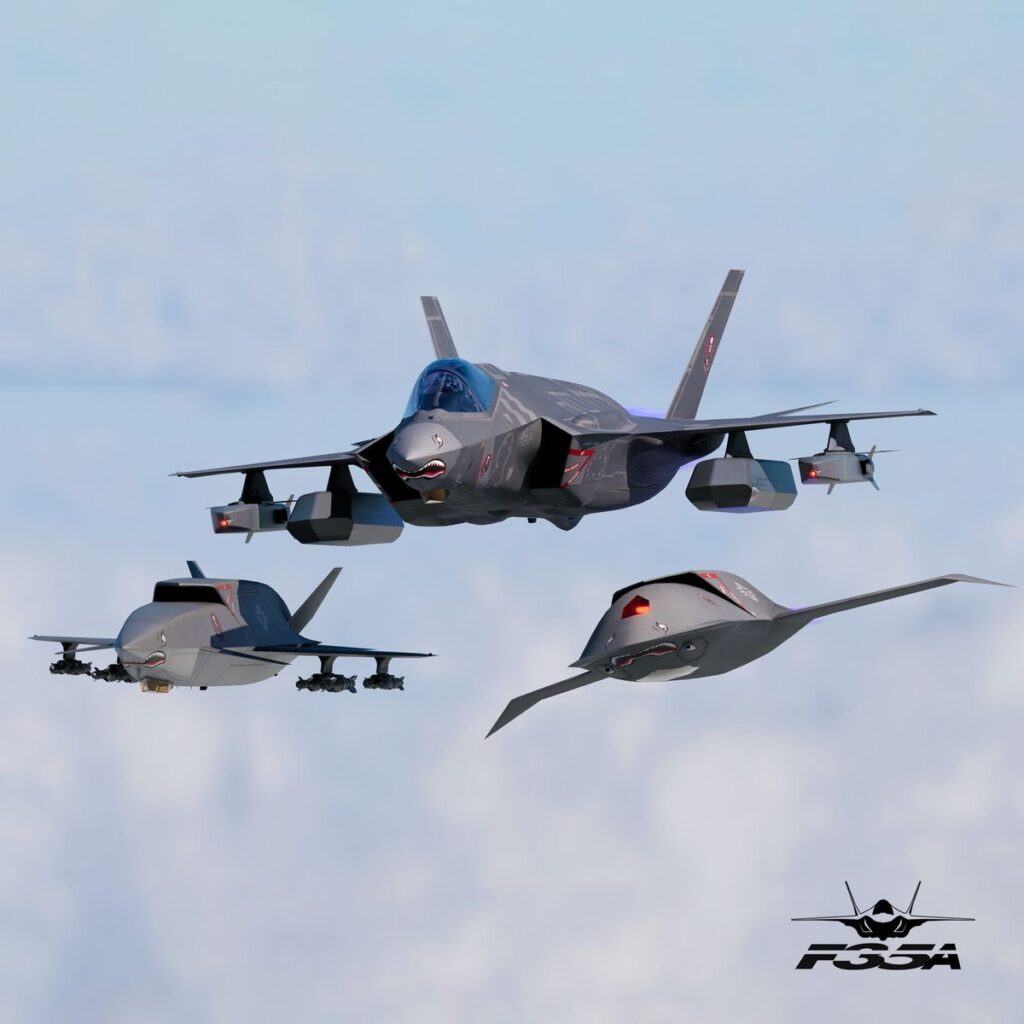
By 2030, the U.S. Air Force’s concept of air dominance has taken on a new face—one defined by human–machine teaming. The centerpiece of this transformation is the integration of the F-35A Lightning II with its autonomous “Loyal Wingmen,” a fleet of advanced uncrewed combat aircraft designed to fly alongside manned fighters. Together, they form what’s known as the 2030 Squadron, a next-generation combat unit built on data fusion, artificial intelligence, and distributed lethality.
The F-35A, already a networked powerhouse, now serves as both a sensor hub and a mission commander in the air. Its pilots are not just flying their aircraft—they’re directing a team of semi-autonomous drones that can scout, jam, strike, or defend. Each Loyal Wingman is equipped with its own AI flight system, capable of making split-second decisions while still following the intent and mission parameters of the human pilot. The partnership amplifies combat power without increasing risk to human life.
A typical 2030 Squadron sortie might include two F-35As each leading three or four Loyal Wingmen. The uncrewed aircraft extend the squadron’s reach, pushing deep into contested airspace to locate threats or deceive enemy radar networks. Some Wingmen are configured for electronic warfare, carrying jammers and decoys. Others are fitted with precision weapons, turning them into expendable strike platforms capable of overwhelming enemy defenses. The F-35As orchestrate this digital ballet through secure, high-bandwidth datalinks, managing the flow of sensor data and mission updates in real time.
The key to the system’s effectiveness lies in autonomy trust—the pilot’s ability to delegate tasks to machines without losing situational control. AI copilots aboard the F-35A assist in workload management, translating complex data streams into clear tactical options. When threats appear, Wingmen can independently reposition, counterattack, or shield their leader without waiting for direct commands. It’s a model inspired as much by swarm behavior in nature as by modern air combat theory.
From a strategic standpoint, the 2030 Squadron marks a shift from traditional force projection toward distributed combat resilience. Instead of relying on a few highly capable but expensive jets, the Air Force envisions a scalable force structure: many affordable, attritable drones supporting fewer manned aircraft. This structure complicates enemy targeting and enhances survivability. Losing a Wingman doesn’t end a mission—it simply changes the formation’s dynamic.
Training for such units has evolved as well. Pilots now learn to think like mission commanders in a digital battlespace, rehearsing in high-fidelity simulators that model not only aircraft performance but AI behavior. The line between human intuition and machine logic grows thinner with each iteration of the program.
By 2030, the F-35A x Loyal Wingmen 2030 Squadron isn’t science fiction—it’s a cornerstone of operational planning. The blend of manned precision and autonomous adaptability represents the Air Force’s vision of future airpower: fast, flexible, and fearless. It’s not about replacing pilots; it’s about expanding what they can achieve—together, as one integrated, intelligent force.


